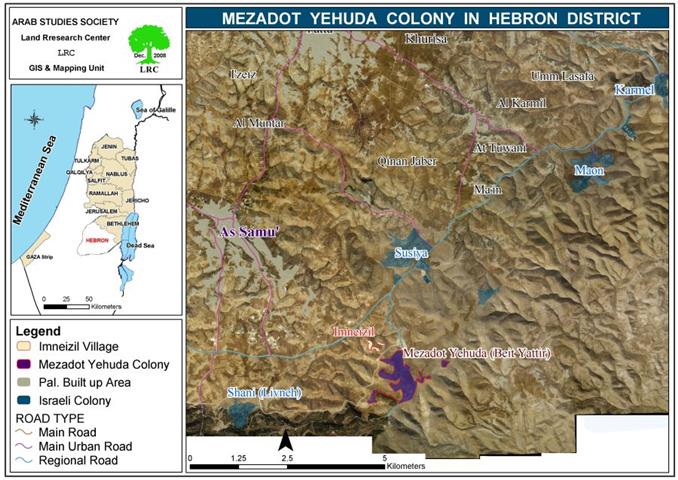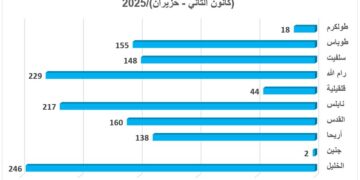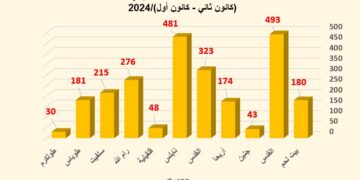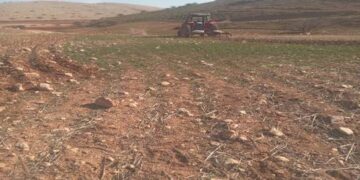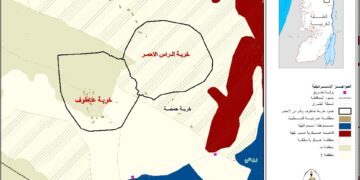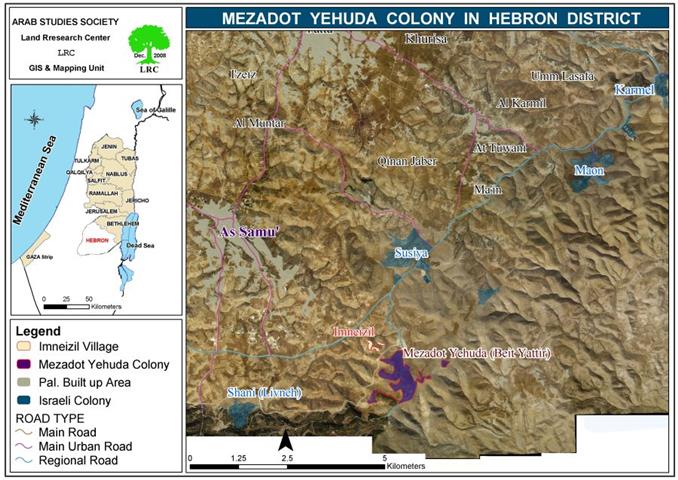Mr. Mohammad Khalil Mahmoud Abu Qbeita has appealed, via the Land Research Center (LRC), to all national and international humanitarian organizations to help him in stopping colonists’ tacks against his agricultural land.
The land of Mr. Abu Qbeita is located near the colony of Mezudat Yehuda (a.k.a. Beit Yattir) in the southern parts of the town of Yatta in Hebron Governorate. Recently, a number of colonists had made a habit of entering his crop-filled land with their sheep as to graze in it.
The family of Abu Qbeita has planted 150 dunums of its land with wheat and barley. However, a Beit Yattir colonist has entered the land a number of times with his 50 big-sized sheep causing an irreplaceable damage to the newly-emerging crops.
Abu Qbeita’s Simple Demand:
Abu Qbeita has requested to get assistance in getting barbwires and metal angles as to enable him to place a fence around his land in an effort to prevent further damage to his crops and to protect it from the colonists and Israeli military jeeps. Such damage was also sustained during the 5th demolition of his house (which took place in March 2008) as Israeli bulldozers destroyed the crops in his lands located adjacent to the house. The destroyed crops were supposed to provide income to 20 members of his family as well as 14 members of his brother’s, Mahmoud, family.
Abu Qbeita Family and its Big Forgotten Prison:
The families of Mohmmad and Mahmoud Abu Qbeita live surrounded by the barbwires and electrical fences of the colony of Beit Yattir. The only exit of this prison is through a gate controlled by Israeli occupation forces. No Palestinian is allowed to reach the residence place of Abu Qbeita except for members of the family living in the enclave whose names are listed at the gate.
Mr. Abu Qbeita went into details about the agony and humiliation he and his family face regularly due to the presence of the gate. For example, he lives in social isolation as no relatives are allowed to visit him in his house due to entry restrictions. Another problem emerges when Mr. Abu Qbeita tries to sell his sheep in Yatta market; he is allowed to get them out of the gate, yet when he tries to get the sheep that was not sold back into his house, Israeli soldiers manning the gate prevent him from doing so under the pretext that the sheep are coming from the “West Bank into Israel.” As such, the sheep need special papers and vaccinations to allow it to re-enter through the gate. Mr. Abu Qbeita indicated that he does his best to sell all of his sheep in Yatta “even at a loss” as not to have to go through the gate with any sheep in an attempt to reduce the harassment.
Attacks by Colonists:
The houses of Abu Qbeita have been frequent targets of attacks from the nearby colony. The Israeli colonist responsible for the “security” of the colony (called Ze’ev Shapira) has been spotted a number of times throwing stones at the Abu Qbeitas’ houses and family members. An Israeli lawyer was hired by Mr. Aby Qbeita at a cost of $10,000 to stop such attacks by Shapira as well as attacks carried out by Israeli occupation soldiers especially during the nights. The Israeli so-called High Court of Justice issued a ruling preventing the nightly raids by the occupation soldiers. The ruling also forced Shapira to sign a declaration to stop his personal attacks. As a result, night raids have stopped and Shapira ceased to attack the Abu Qbeitas. However, other colonists have taken Shapira’s role of stone throwing, stealing the water pump and puncturing the tires of Abu Qbeita’s agricultural tractor.
It is worth noting here that the two houses of Mr. Mohamamd and Mahmoud Abu Qbeita are the only Palestinian houses amongst 160 colonial housing units in the area of Lasafer. They get their electricity from the batteries of the agricultural tractor. A solar panel to generate electricity is badly needed in that area.
For more about the Israeli attacks and violations against Abu Qbeita family, please refer back to the LRC study in that regard which was issued in March 2008 under the title: (The Demolition of Housing Structures in the Village of Imneizel) –
Prepared by:
The Land Research Center
LRC


